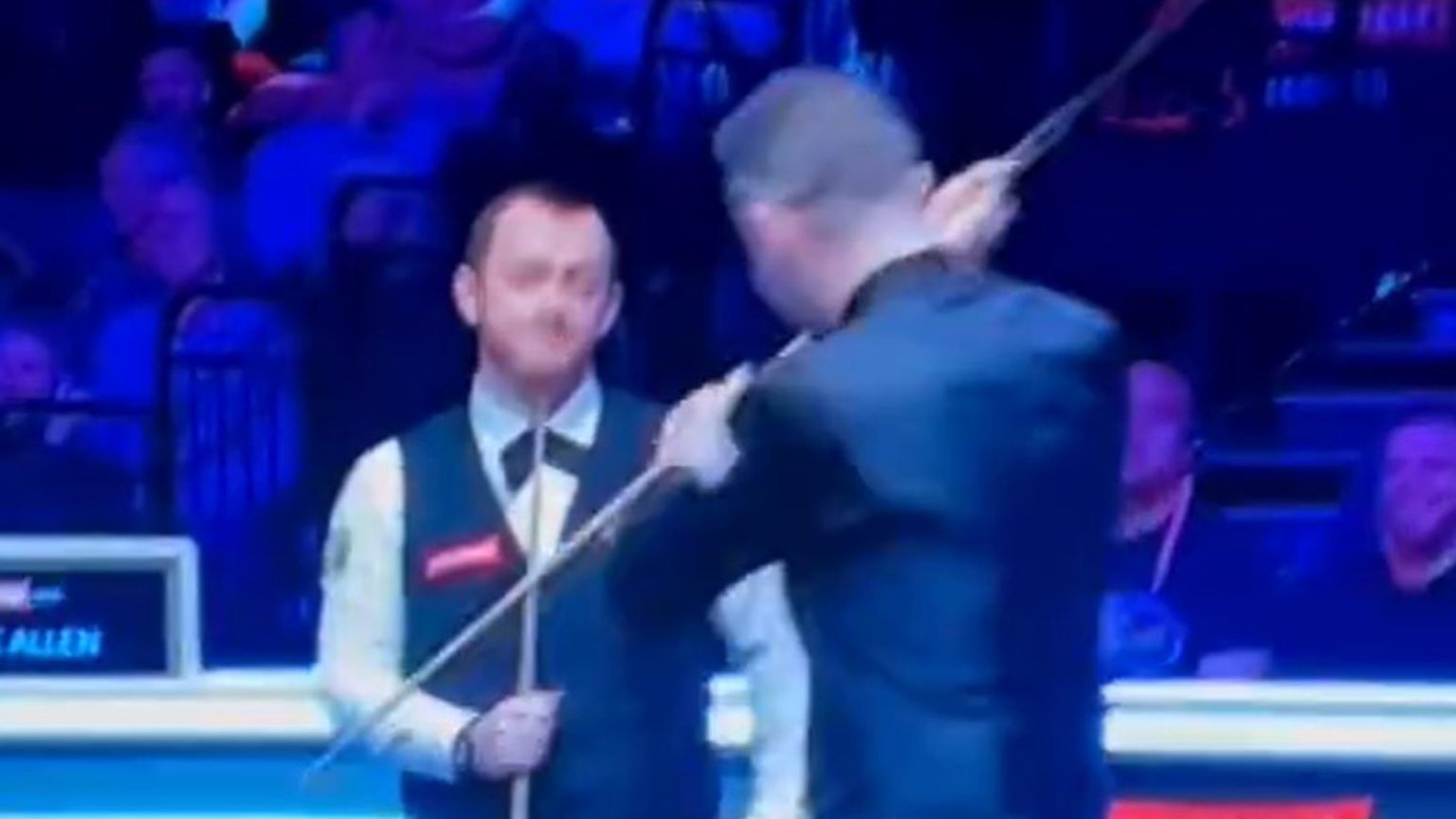Mark Selby’s theatrical display of mock aggression with his cue, pretending to strike his opponent Mark Allen, became a memorable moment in their quarter-final clash at the Masters snooker tournament held at Alexandra Palace. This lighthearted gesture, born out of frustration, followed a sequence of fortunate shots for Allen that left Selby shaking his head in disbelief. The incident, occurring as Selby approached the table, saw him bend over in exasperation, then turn away and jokingly mimic hitting Allen with his cue. This amusing interlude punctuated an otherwise intense battle between the four-time world champion and his challenger.
Allen ultimately prevailed with a 6-2 victory, acknowledging the significant role luck played in his success. He candidly admitted to experiencing an unusual degree of good fortune throughout the match, particularly in a couple of frames he felt he shouldn’t have won. He described the game’s trajectory, starting with high-quality breaks in the initial frames before becoming more scrappy, with both players missing opportunities. Despite the fortuitous turns, Allen believed his overall performance was superior to Selby’s, particularly in the safety department, an aspect he felt he usually struggles against Selby. He emphasized that even without the lucky breaks, he still felt in control of the game’s flow, although his scoring wasn’t as prolific as usual.
The analysis of the match highlights a shift in dynamics between these two players. Allen’s improved safety play, coupled with a significant dose of luck, allowed him to overcome the typically strong safety game of Selby. Winning the fourth frame proved to be a turning point, instilling in Allen a sense that Selby’s composure might be wavering. This victory against Selby, while unconventional, holds particular significance for Allen. He acknowledges that wins against Selby usually require exceptional scoring and one-visit frame wins, highlighting the unusual nature of this particular triumph.
The commentary also touches upon the changing landscape of professional snooker. The dominant “Class of ‘92,” comprising Ronnie O’Sullivan, John Higgins, and Mark Williams, with their collective 14 world titles, is beginning to show signs of fading dominance. Judd Trump and Kyren Wilson are emerging as the new generation of contenders, poised to establish a fresh rivalry that could define the sport for the next decade. Trump acknowledges Wilson’s rapid rise and the positive impact it has had on his own game. He anticipates a sustained competition with Wilson, potentially spanning many years.
This emerging rivalry signals a potential shift in power within the snooker world. As the veterans begin to relinquish their stronghold, Trump and Wilson represent the future of the sport, ready to carve their own legacies and redefine the dynamics of competition. Their contrasting styles and personalities add an intriguing dimension to this budding rivalry, promising captivating battles in the years to come.
In summary, the Selby-Allen match was not only a display of skill and sportsmanship but also a microcosm of the broader changes occurring within the professional snooker landscape. While Selby’s theatrical display provided a moment of levity, the match itself, with its unusual reliance on luck, highlighted Allen’s improving form and his potential to challenge the established hierarchy. This, coupled with the rise of Trump and Wilson, suggests an exciting future for the sport, with new rivalries and fresh talent poised to take center stage.




